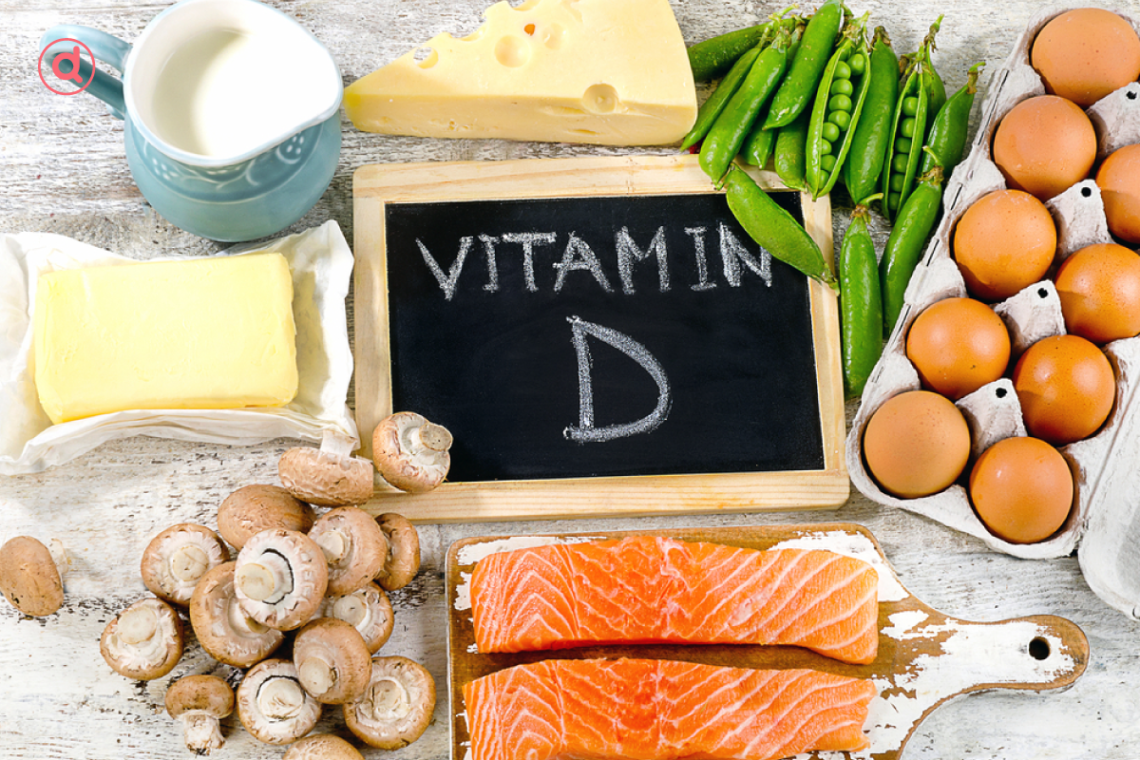Vitamin D is the name that describes a set of 5 compounds including D2 ergocalciferol and D3colecalciferol, plus D1, a mix of ergocalciferol and lumisterol in equal parts, D4 dihydroergocalciferol and D5 sitocalciferol. With two successive steps of hydroxylation in the liver and then in the kidney, they are transformed into the hormone calcitriol or 1,25 (OH) 2D, which is the biologically active form of the vitamin.
Dietary Sources Of Vitamin D

The studies gradually add information both on its role in regulating bone and tooth homeostasis and calcium metabolism and also on health in general: deficiency states (in particular of the D3 form) expose you to risks of type 2 diabetes. , metabolic syndrome, and immunological diseases. Unlike other vitamins, the main source of supply for the body is UVB sun rays, which induce the synthesis of cholecalciferol from the 7-dehydrocholesterol present in the skin, with very high efficiency.
Food sources mostly refer to some fatty fish (tuna, salmon, mackerel, herring, and swordfish), egg yolk, and fatty cheeses.
A recent update of a Cochrane review wanted to take stock of supplementation in pregnancy, to clarify the role of supplementation, between benefits and disadvantages based on the evidence available to date. In particular, we wanted to investigate vitamin D deficiency in pregnancy (serum level <50 nm) and the possible complications such as pre-eclampsia, diabetes, preterm birth, and low birth weight babies (less than 2500 grams); deficiency that can have effects on children also in terms of bone growth, up to the risk, in the most severe cases of rickets or even the development of allergies (European Food Safety Authority, 2016; Royal College of Obstetricians & Gynaecologists, 2014).
Taking Vitamin D Supplements While You Are Pregnant
The Cochrane review (30 research studies and over 3,700 pregnant women) showed that taking vitamin D supplements during pregnancy:
– Likely reduces the risk of contracting pre-eclampsia and gestational diabetes (the risk of pre-eclampsia eclampsia also decreases with the simultaneous intake of calcium).
– Can reduce the risk of low birth weight (less than 2500 grams).
– Can reduce the risk of severe bleeding after birth.
Little or no difference was noted for the risk of preterm birth before 37 weeks and nothing certain emerged in relation to possible damage from vitamin intake. Although there are potential harm in taking combined calcium and vitamin D supplements – the review points out – the benefits for women at risk of pre-eclampsia appear to be superior (the evaluation should however be left to the referring physician).
The Right Doses Of Vitamin D

And what about the doses? Currently, the recommended intake for pregnant women is 15 micrograms (600 IU) per day expressed as cholecalciferol (1 ìg of cholecalciferol = 40 IU vitamin D), considering both the dietary intake and the endogenous synthesis in the skin.
A subsequent Cochrane review examined the effects and safety of several vitamin D supplementation regimens in pregnancy. The authors found that supplementation with values above the recommended 600 IU may reduce the risk of gestational diabetes but have little or no impact on the risk of pre-eclampsia, preterm labor, or low birth weight (compared to women receiving the dose recommended of 600 IU / day or less).
Higher supplementation doses i.e. more than 4000 international units per day or more (of the current upper limit of vitamin D) make little or no difference in the risk of developing pre-eclampsia, gestational diabetes, preterm birth, or low birth weight compared to doses up to 3999 IU / d or less. Certainly, there remain some aspects to be investigated in relation to the intake of vitamin D and the prevention of some complications in pregnancy; There is also a lack of evidence to support universal screening for vitamin D deficiency in pregnancy.
Read More: Nutrition During Pregnancy: What To Eat And What To Avoid











